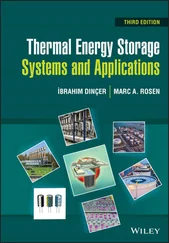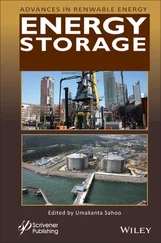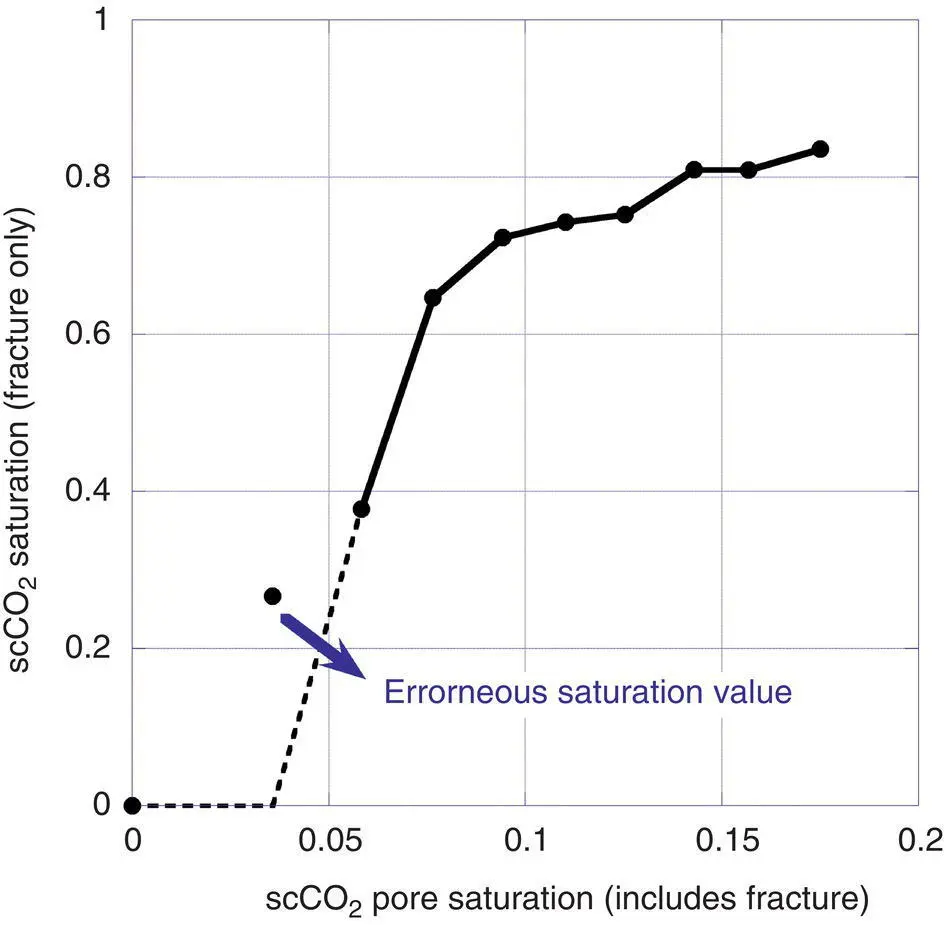
Figure 5.10 Comparison between the scCO 2saturations in Frac IIb sample within only the fracture versus the entire core. The saturation within the fracture was determined from CT images. When rapid changes in the Young's modulus and the attenuation occur in Figure 5.8(core scCO 2saturation ~5%–7%), nearly 50% of the fracture is already saturated with scCO 2, although from the CT images, most of the matrix near the fracture is still fully saturated with water. The final saturation of the fracture is also much higher (~83%) compared with the entire core (~17.5%). Note that the second data point in the plot was affected by CT image registration errors near the bottom of the sample.
where the fractor 1/3 is due to the fact the radial total stresses τ 11and τ 22are zero. B can be expressed as (e.g., Mavko et al., 1998)
(5.14) 
where K fis the bulk fluid modulus for mixed water and scCO 2. Also, from equations (5.5)and (5.6), by assuming no fluid motion in the fracture (i.e.,  ),
),
(5.15) 
where we used α F~ 1 and η M~ φ F/ K f, and φ F~ 1.
The resulting uniaxial Skempton coefficients B /3 and B F/3 are plotted in Figure 5.11for a range of scCO 2saturation within the matrix rock and the frac ture. At the initial stage (the fracture and matrix pores are fully water saturated), there is a large difference in the uniaxial Skempton coefficient values, which would result in rapid fluid exchange and energy dissipation. At the intermediate stage, fast passing of scCO 2results in large increases in the scCO 2saturation in the fracture (50% is assumed here) compared with the matrix (0% is assumed). This results in much smaller differences in the Skempton parameters, which indicates much less energy loss from the fluid movement. At the final stage (scCO 2saturations of the fracture 83%, matrix 16.5% [calculated from the saturation of the entire core, 17.5%]), the difference becomes somewhat larger, although much less than the initial stage. Although admittedly this analysis ignores the dynamic effect of fluid flow between a fracture and a matrix, it indicates that the fluid‐substitution‐induced changes in the dynamic pore pressure differences may be responsible for the observed unusual behavior of the dynamic Young's modulus and the attenuation.
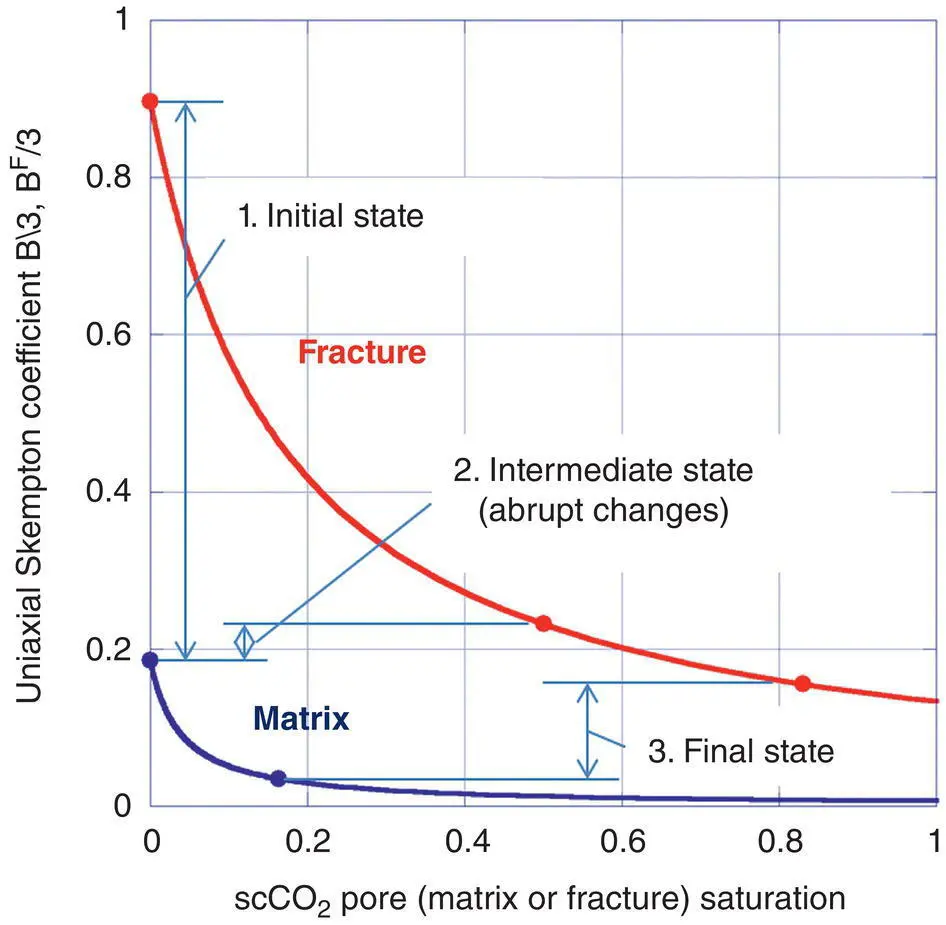
Figure 5.11 Changes in the uniaxial Skempton coefficients B/3 and B F/3 during Frac IIb scCO 2injection test. The difference between the fracture and the matrix is proportional to the wave‐induced pressures between them if the fluid within the pores and the fracture is not allowed to move. A large difference at the initial water‐saturated state reduces when the scCO 2saturation of the fracture increases by fast passing of the fluid to the fracture (here, the matrix scCO 2saturation is assumed to be unaffected). In the final stage, the difference between the coefficients recovers to some degree.
When the two mechanisms (near‐monotonic decreases in the modulus and increases in attenuation from the heterogeneous invasion of scCO 2in the matrix, and nonmonotonic changes in the modulus and attenuation from interactions between the matrix and the fracture) are combined, the observed complex behavior of the sample's dynamic properties can be explained. However, dynamic poroelastic modeling of the scCO 2‐invasion‐induced dynamic rock property changes would be needed for their quantitative validation.
In this chapter, we presented a series of laboratory experiments on the seismic property changes of fractured Carbon Tan sandstone cores during supercritical CO 2injection. The use of a modified resonant bar technique (Split‐Hopkinson Resonant Bar method) allowed us to make the measurements at crosshole seismic survey frequencies, at approximately 1.4–1.5 kHz for longitudinal waves (or Young's modulus) and 800–900 Hz for torsional waves (or shear modulus). Evolving distributions of water and scCO 2in the samples were also determined via X‐ray CT imaging.
The experiments showed that CO 2injection resulted in little to no changes in the overall Young's modulus of the sample when the fracture was highly compliant and parallel to the core axis. In contrast, samples containing a core‐perpendicular fracture exhibited large decreases in the Young's modulus, particularly when the leading edge of the invading scCO 2reached the fracture by fast passing along high‐permeability features in the sample. In both cases, large increases in the attenuation were observed. However, the attenuation in the latter samples showed a sudden decrease when the scCO 2reached the fracture, corresponding to the maximum rate of decrease in the Young's modulus.
In our experiments, the pressure diffusion length in water‐saturated, intact rock matrix was a little over 1 cm, and the diameter and the length of the core sample were 3.8 cm and ~10 cm, respectively. This indicates that the fluid‐substitution‐induced changes in the rock's bulk modulus occurred locally within the sample, unless the wave‐induced perturbation of the fluid pressure could propagate along a high‐permeability fracture. We observed the Young’s modulus of a sample with a core‐parallel fracture was insensitive to scCO2 injection. An analysis using a simple, isotropic Gassmann model showed this was possibly attributed to the large (drained) normal fracture compliance, combined with the equalization of the wave‐induced fluid pressure throughout the core, which was facilitated by the fracture. In contrast, the nonmonotonic changes in both Young's modulus and attenuation for the sample containing a core‐perpendicular fracture cannot be explained by the Gassmann model which assumes uniform pressure within the core. For this sample, because the length of the sample (and the separation distance between the fracture and the sample interfaces) far exceeded the pressure diffusion length, the effect of the fracture on the fluid substitution was seen only when the scCO 2arrived at the fracture.
The laboratory‐observed changes in seismic velocity and attenuation during scCO 2injection were strongly dependent upon the orientation of the fractures. Particularly, there is an indication that preferential saturation of a fracture by scCO 2, oriented perpendicular to the compressional wave direction, can result in sudden decreases in the seismic velocity and attenuation. Because fracture orientation has a dominant effect on the migration of scCO 2and its saturation in reservoir rock, the observed changes can be used for improved assessment of the scCO 2's behavior from seismic measurements. Caution must be used in their applications, however, because the pressure diffusion length in reservoir rock is often very short even at the surface seismic exploration frequencies, limiting some of the laboratory‐observed fluid‐substitution‐induced changes in the rock properties (seismic properties) to a small volume around the fractures. Additionally, observed changes in seismic waves in the field are averaged over the effects from multiple fractures with different mechanical properties and orientations.
Читать дальше
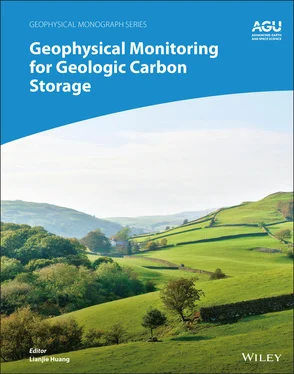


 ),
),






